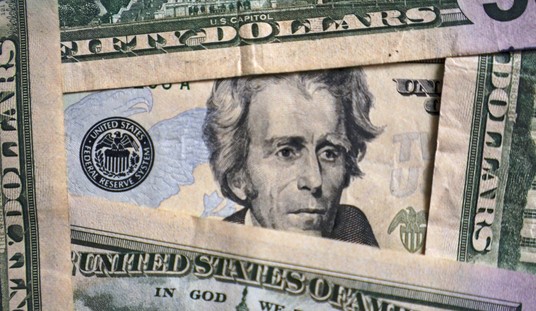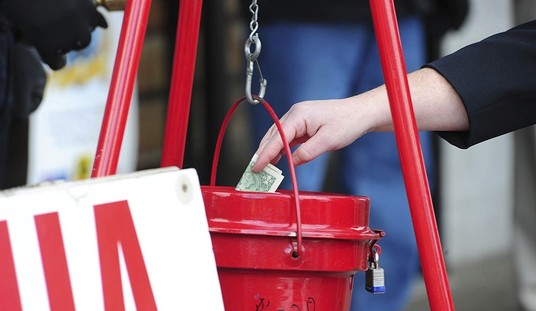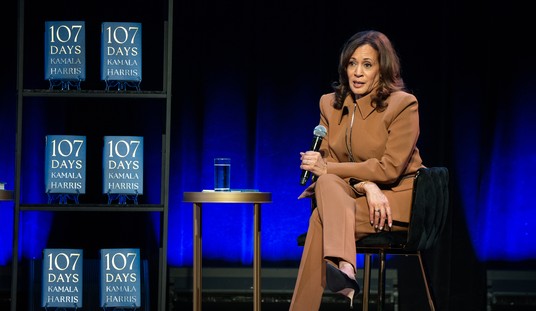
In 2016, then-Treasury Secretary Jacob Lew announced his decision to replace the portrait of Andrew Jackson, the seventh U.S. president, with that of Harriet Tubman, leader of the Underground Railroad, on the $20 bill.
Always on the lookout for something new to criticize the President over, the New York Times’ Alan Rappeport published a story on Friday which blamed the delay of the Harriet Tubman $20 on Trump. According to Rappeport, Treasury Secretary Steve Mnuchin announced that “designs of the Harriet Tubman $20 would be delayed until 2026 and a future Treasury Secretary will decide who’s on the face of the note.” He also suggested that the reasons for the delay were political.
Rappeport speculated that the reason for the delay was President Trump’s fondness for Andrew Jackson, who currently appears on the $20 bill.
Here’s an early design of the Harriet Tubman $20 bill created by the Bureau of Engraving and Printing. Steven Mnuchin said designs would be delayed until 2026 and a future Treasury secretary will decide who’s on the face of the note. https://t.co/brRwxuu8F1 pic.twitter.com/o0ffu53tF2
— Alan Rappeport (@arappeport) June 14, 2019
Questioned about the rollout of the Tubman bill before the House Financial Services Committee last month, “Mnuchin noted that a 2020 rollout was improbable, if not impossible, due to daunting technical issues. Mnuchin indicated that the redesigned bill would make an emergence in 2028 with designs coming out two years prior.”
Rappeport said he had spoken to a source at the Bureau of Engraving and Printing (BEP), who wished to remain anonymous – naturally. This person claimed to have seen a “digital image of the redesigned bill.” Rappeport wrote:
The development of the note did not stop there. A current employee of the bureau, who asked not to be named because of the sensitivity of the matter, personally viewed a metal engraving plate and a digital image of a Tubman $20 bill while it was being reviewed by engravers and Secret Service officials as recently as May 2018. This person said that the design appeared to be far along in the process.
That source fueled speculation from the New York Times, which pondered if Mnuchin “delayed” the release in order to avoid conflict from Trump, who is a fan of the Andrew Jackson $20 bill.
But the Treasury Department, which oversees the engraving bureau, decided that a new $20 bill would not be made public next year. Current and former department officials say Mr. Mnuchin chose the delay to avoid the possibility that Mr. Trump would cancel the plan outright and create even more controversy.
Mnuchin has denied that.
Upon reading Rappeport’s story on Friday, Senior Adviser for Public Affairs to the Secretary of the Treasury, Monica Crowley, sent the following tweet:
The scheduled release (printing) of the $20 bill is on a timetable consistent with the previous administration. The Secretary at this point is focused on security features and anti-counterfeiting measures related to the currency. The suggestion that the process is being delayed is completely erroneous.
Treasury spokesperson response to today’s misleading New York Times story: pic.twitter.com/PeMcoVL8tC
— Monica Crowley (@TreasurySpox) June 14, 2019
The Director of the Bureau of Engraving and Printing, Len Olijar, released a statement saying that a 2020 release of the bill was never even a possibility. Their primary focus is to thwart counterfeiting and this has made the process much more complex. In addition, the illustration published in the NY Times was NOT a real bill. Read the statement below if interested in the details.
The Advanced Counterfeit Deterrence Steering Committee, which includes membership from the BEP, the US Secret Service and the Federal Reserve System, was chartered to make design and security recommendations to the Secretary of the Treasury. At this time, the ACD Committee and BEP remain focused on developing security features for the upcoming redesign.
As technology has evolved, banknote production has vastly changed over the last three decades. The next family of notes require new, overt and covert security features for the public, the banknote equipment manufacturers, and the central bank, to keep our currency safe and secure. Security features also need to work in mass production. A design can change during testing. The overwhelming success of the redesigned $100 in thwarting counterfeiting, is greatly due to the effectiveness of the blue security thread which is a public feature (and which a design was integrated around afterwards). That development alone of that security feature took approximately 10 years to finalize.
Moreover, BEP was never going to unveil a note design in 2020. To keep our currency safe and secure, it is unwise to give counterfeiters a look at a potential future note far in advance of a note going into circulation. Additionally, if the concept of a note that was made public by the government were to change during that lengthy amount of time, it would create confusion in the global marketplace, further aiding counterfeiters.
No Bureau or Department official has ‘scrapped’ anything; it is too early to develop an integrated concept or design until security features are finalized. The aesthetics or look of the note has always come after and been driven by the security features. Everything remains on the table.
The illustration published by the New York Times was a copy of an old Series note with the signatures of former officials, with a different image super-imposed on it. It is not a new $20 note, as incorrectly stated by the New York Times, in any way, shape or form. The facsimile contained no security features or offset printing included on currency notes. There is nothing about that illustration that even begins to meet technical requirements for the next family of notes.













Join the conversation as a VIP Member